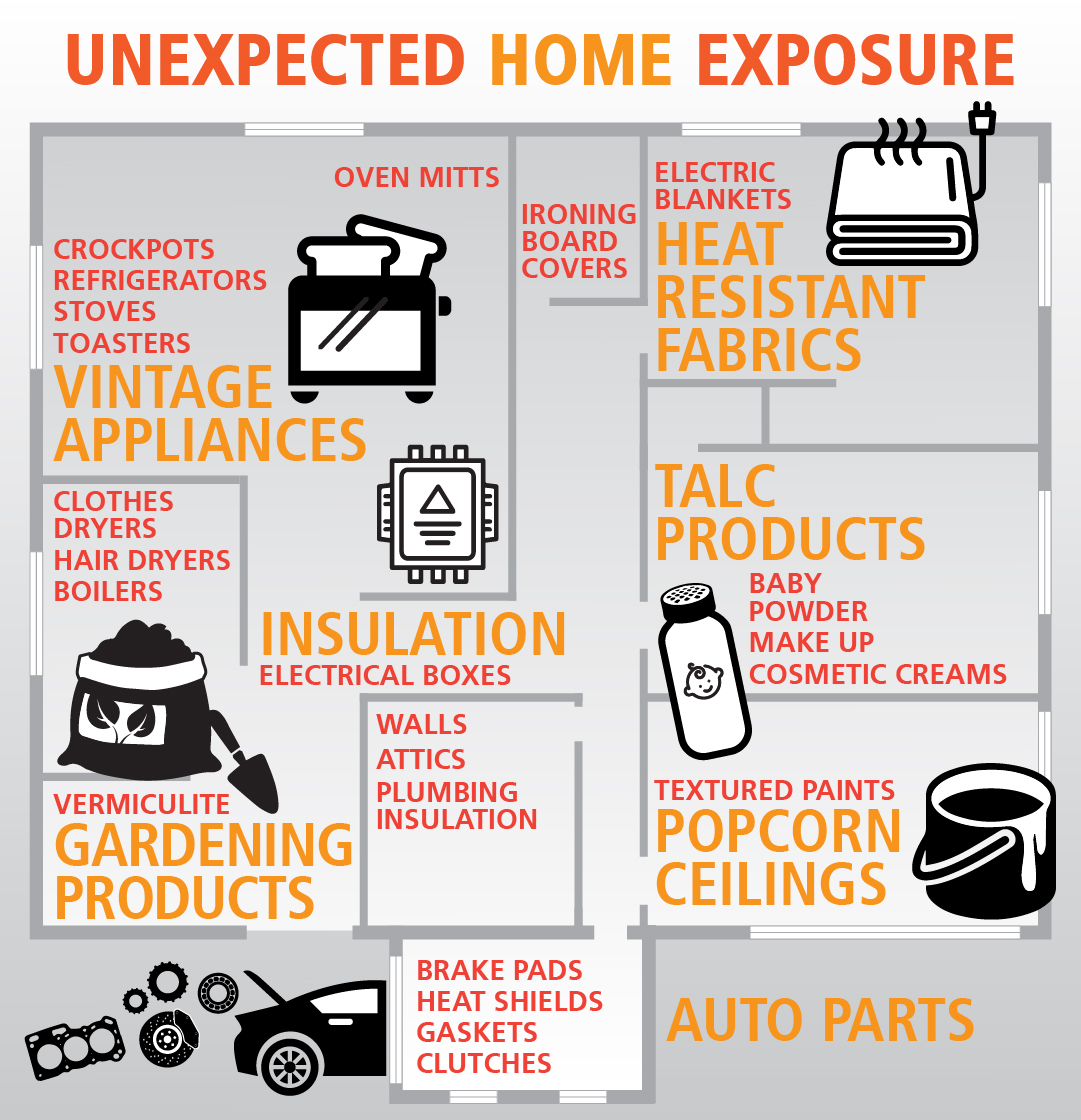
Mesothelioma Awareness Month: Household exposures that may put your family at risk | Causes, Not Just Cases®
One of the most important aspects of my job as an asbestos attorney is listening to clients’ stories. Unfortunately, given the nature of the work, there are often moments when fond and seemingly innocuous memories are tainted by the realization that they may have been a point of exposure to deadly asbestos and the cause of a life-altering diagnosis years down the road.
For one, the memory was trailing behind his father as a child, intently watching as the man fixed up old cars or worked on renovations around the house. A dirty job, dust from those projects frequently filled the air and was inhaled by the child. He died in his 30s after a tragically short battle with mesothelioma, an aggressive and deadly form of cancer that can develop decades after someone is exposed to asbestos.
“If you don’t think asbestos exposure is something you, personally, need to be concerned about, you’re wrong. Decades of frequent use of the mineral in everything from plumbing to hairdryers means asbestos is now all around us, often hiding in plain sight. As it stands, anyone could potentially be exposed, whether through seemingly benign household items like talc-based powders or on the job.” – John Hurst
My colleague John Hurst recently posted a blog titled: Mesothelioma Awareness Month: Jobs you didn’t know pose a risk.
Equally as important are the many household exposures that people often aren’t aware of, even though they tragically can be just as deadly. Every September – Mesothelioma Awareness Month – we join other advocates around the world in raising awareness on this issue with the goal of saving lives. Thousands of men and women are lost each year due to mesothelioma, but it doesn’t have to be this way. An outright ban of the toxic mineral in the U.S., both future uses and asbestos already in place, would go a long way to curb mesothelioma rates by preventing future cases.

Where asbestos can be found in your home
Below are several places in your home that you may not be aware could expose you and your family to asbestos:
Insulation
Insulation is used throughout homes, including in walls, attics, around plumbing and electrical boxes. Unfortunately, for homes constructed prior to the 1980s, asbestos was the material of choice for many insulation projects largely due to its low cost and heat-resistant properties. If disturbed, particularly during renovations, asbestos-containing insulation can put homeowners at risk.
Popcorn ceilings
Asbestos was often added as a hardener to create popcorn ceilings and similar textured paints. Once dry, asbestos-containing textures and finishes can create toxic dust if chipped or removed, putting homeowners at risk.
Auto parts
Brake pads, heat shields, gaskets, clutches and other parts, particularly in older model vehicles made prior to the 1980s, may contain asbestos.
Heat-resistant fabrics
Fibrous in nature and highly resistant to heat, asbestos was often woven into oven mitts, ironing board covers, electric blankets and other products, many of which are still in homes today. Over time, as the fabric on such products wears out, the asbestos fibers can be released and potentially inhaled, placing families at risk.
Appliances
Asbestos was commonly used to insulate crockpots, refrigerators, stoves, boilers, toasters, clothes dryers, hair dryers, and other appliances prior to the 1980s.
Talcum products
Commonly used in baby powders, makeup and other powders, talc, in its raw form, may contain traces of toxic asbestos. The minerals can naturally occur within close proximity of each other in the earth when mined. Although cosmetic-grade talc is required to be asbestos free in the U.S., the industry is not highly regulated to make sure products are safe. Johnson & Johnson announced in 2020 that it would discontinue its talc-based products amid lawsuits filed by thousands of people claiming Johnson & Johnson’s talc products caused their mesothelioma and other cancers. Read more on that in my colleague Carmen S. Scott’s blog: Dirty Dancing: It’s time to put J&J’s Baby Powder in the corner!
Gardening products
Vermiculite is a naturally occurring mineral that is sometimes used as an additive to enhance potting soils. When mined, however, vermiculate can be contaminated with asbestos. If inhaled, toxic dust puts gardeners at risk.
No amount of asbestos exposure is considered safe and every death due to asbestos is one too many. And although this list is not all inclusive, it shows just how easily exposure can happen in a place that’s supposed to be a safe haven – our homes. If you’re considering a renovation or removing asbestos from your home for peace of mind, I strongly encourage you to consult with a professional first.
Subscribe to our blog if you’d like to have more content like this sent directly to your inbox.